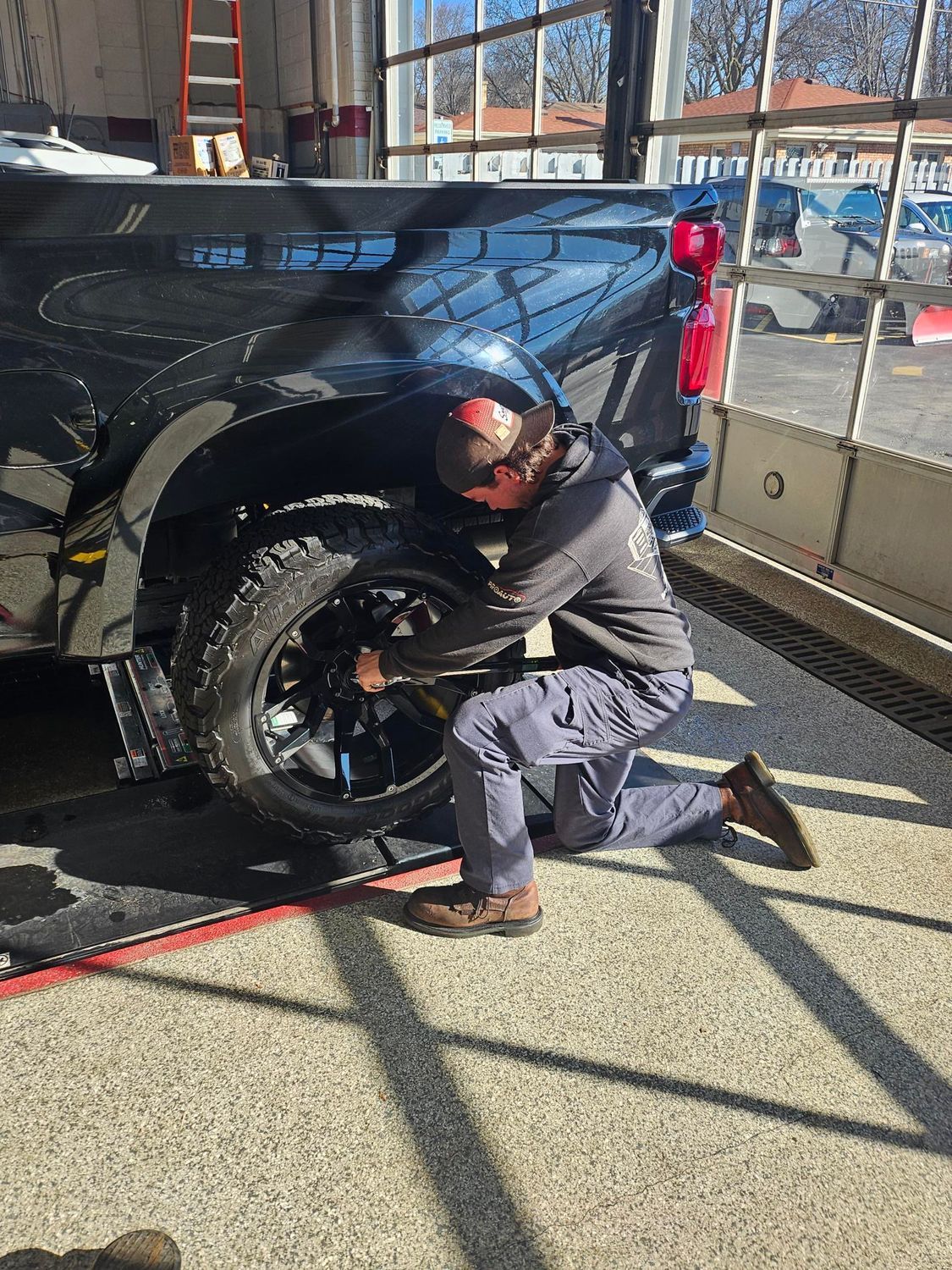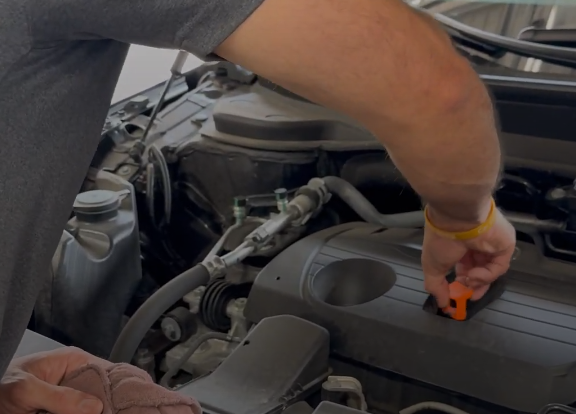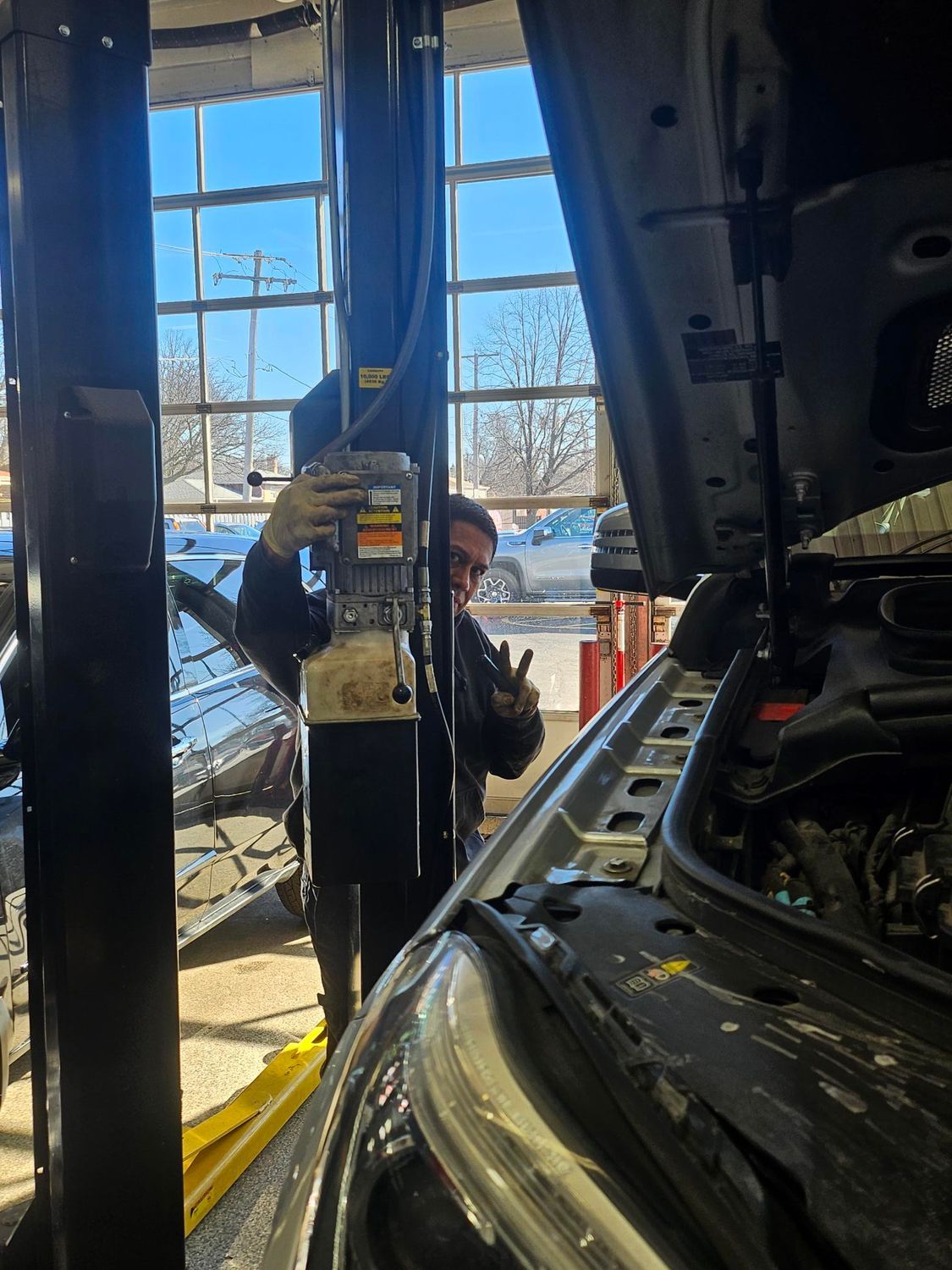Tire Inspection: How to Spot Issues Early
The Unseen Guardians of Your Drive
At ProAuto in Morton Grove, we believe that your vehicle's tires are the unsung heroes of every journey, often overlooked until a problem arises. They serve as the vital connection between your car and the road, affecting everything from steering responsiveness and braking efficiency to ride comfort and overall safety.
We understand how essential healthy tires are for your driving experience, which is why we’re committed to helping our community with proactive tire care and early detection of potential issues. By sharing tips on how to spot tire problems before they escalate, we aim to empower you to ensure a safer ride, extend the lifespan of your tires, and even boost your vehicle's fuel efficiency. Together, let’s keep our roads safe and our vehicles running smoothly.

Key Takeaways
- Importance of Tire Care: Regular maintenance and attention to your tires are crucial for safety and performance.
- Early Detection of Tire Issues: Identifying problems early can prevent dangerous situations and costly repairs.
- Impact of Tire Health: Healthy tires ensure optimal steering, braking, and overall vehicle safety.
- Role of Proper Tire Pressure: Maintaining correct tire pressure improves fuel efficiency and extends tire life.
- Benefits of Professional Inspections at ProAuto: Expert inspections ensure your tires are in top condition for safe driving.
Deciphering Tire Wear: A Visual Guide to Potential Problems
Your tires offer visual clues about their health and the alignment of your vehicle. Learning to interpret these wear patterns can save you from potential hazards and costly repairs.
- Uneven Shoulder Wear (Inside/Outside): Observing that the inner or outer edges of your tire tread are significantly more worn than the central portion often signals
misalignment. When your wheels aren't properly aligned, the tires can scrub against the road surface, leading to this accelerated wear on the shoulders. Similarly,
under-inflation can cause the shoulders of the tire to bear a disproportionate amount of the vehicle's weight, resulting in similar wear patterns. Addressing these issues promptly at a service center like ProAuto is crucial, as uneven shoulder wear reduces your tires' contact with the road, compromising traction and handling, particularly during turns and in adverse weather.
- Center Tread Wear: Conversely, if the center of your tire tread is wearing down more rapidly than the edges, the primary culprit is often
over-inflation. When a tire is inflated beyond the manufacturer's recommendation, the center of the tread bulges outward, leading to increased contact and faster wear in this area. Maintaining the correct tire pressure, a service we provide at ProAuto, ensures even distribution of the vehicle's weight across the entire tread, promoting uniform wear and extending tire life.
- The Significance of Wear Patterns: These distinct wear patterns are more than just cosmetic issues; they are indicators of underlying mechanical or inflation problems. Our experienced technicians can diagnose the root cause of the uneven wear, whether it's a need for wheel alignment or adjustments to your inflation habits, helping you to correct the issue and prevent further tire damage and safety risks.
Measuring Safety: Understanding Tread Depth
The depth of the grooves in your tire tread is directly related to its ability to grip the road, especially in wet or slippery conditions. As tires wear down, this crucial tread depth diminishes.
- The Penny Test: A Quick Check: A common and simple method to get a rough idea of your tread depth is the
penny test. Insert a U.S. penny into one of the main tread grooves with Abraham Lincoln's head facing downwards. If you can see the top of Lincoln's head, it's a general indication that your tread depth is likely below the safe limit and that tire replacement should be considered soon. However, it's important to understand that this is not a precise measurement.
- The Precision of a Tread Depth Gauge: For a more accurate assessment, a
tread depth gauge is the preferred tool. This inexpensive device provides a precise measurement of the remaining tread in millimeters or inches. Most jurisdictions have legal minimum tread depth requirements, often around 2/32 of an inch. Tires worn down to or below this limit offer significantly reduced grip and increase the risk of accidents. At ProAuto, our technicians use tread depth gauges during every tire inspection to provide you with an accurate understanding of your tire wear and advise on the appropriate time for replacement.
- Tread Depth and Performance: Adequate tread depth is essential for channeling water away from the tire's contact patch, preventing hydroplaning on wet roads. As tread depth decreases, this ability diminishes significantly, increasing the risk of losing control. ProAuto's comprehensive tire inspections include a careful evaluation of your tread depth, ensuring that your tires provide the necessary grip for safe driving in various conditions.
The Language of Motion: Interpreting Vibrations and Noise
Pay attention not only to how your tires look but also to how they feel and sound while you're driving.
- Steering Wheel Vibrations: If you notice persistent
vibrations in your steering wheel, especially at certain speeds, it could be a sign of
tire imbalance or a need for
wheel alignment. An unbalanced tire doesn't rotate smoothly, causing vibrations that can be felt through the steering wheel. Addressing this issue at ProAuto through tire balancing or alignment services can improve ride comfort and prevent uneven tire wear.
- Body Vibrations: Vibrations felt throughout the entire body of your vehicle can indicate more serious tire-related problems, such as internal tire damage or a significant imbalance. It could also be a symptom of underlying issues with your vehicle's suspension system. In such cases, a thorough inspection by the experts at ProAuto is crucial to accurately diagnose the cause and recommend the necessary repairs.
- Unusual Driving Noises: Listen for any
unusual noises coming from your tires as you drive. A rhythmic thumping sound might indicate a bulge or flat spot on a tire, while a persistent humming could be a sign of uneven wear or internal tire damage. A scraping sound might suggest something is rubbing against the tire. ProAuto's experienced technicians can perform a comprehensive inspection to identify the source of these noises and advise on the appropriate course of action.
Visible Threats: Identifying Cracks and Bulges
A careful visual examination of your tire sidewalls is crucial for identifying potential structural weaknesses.
- Sidewall Integrity: Regularly inspect the sidewalls for any visible
cracks,
bulges, or
blisters. Cracks can be a sign of dry rot or damage caused by impacts or curb strikes. Bulges or blisters often indicate internal damage to the tire's reinforcing plies.
- The Risk of Blowouts: These visual cues are serious indicators of compromised tire integrity and significantly increase the risk of a sudden and dangerous
blowout, especially when driving at high speeds or carrying heavy loads.
- Immediate Action: If you observe any cracks or bulges on your tire sidewalls, it is imperative to visit ProAuto immediately for a safe and timely tire replacement. Driving on tires with structural damage is extremely hazardous and should be avoided at all costs.
The Silent Defect: The Importance of Tire Pressure
Maintaining the correct tire pressure is a seemingly small detail that has a significant impact on your vehicle's performance, efficiency, and safety.
- Regular Pressure Checks: Make it a habit to check your tire pressure at least once a month using a reliable tire pressure gauge. Remember that tire pressure can fluctuate with changes in ambient temperature.
- Dashboard Warnings: Pay close attention to your vehicle's low tire pressure warning light. If it illuminates, it signifies that one or more of your tires is significantly under-inflated and needs immediate attention.
- The Hidden Costs of Under-Inflation: Driving with under-inflated tires can reduce your
fuel efficiency by increasing rolling resistance and can decrease the
tread life of your tires due to uneven wear on the outer edges. More critically, under-inflated tires can overheat, making them more susceptible to damage and dangerous blowouts. We can ensure your tires are inflated to the manufacturer's recommended pressure during our inspections and tire services, maximizing safety and efficiency.
Steering Straight: Recognizing Pulling Issues
A vehicle that consistently pulls to one side while driving straight can be a sign of a tire-related problem or an issue with your vehicle's alignment.
- The Symptom: Notice if you have to constantly apply pressure to the steering wheel to keep your vehicle tracking straight on a level road.
- Initial Troubleshooting: As a first step, check the air pressure in all of your tires. Uneven tire pressure can sometimes cause a vehicle to pull. Inflate all tires to the recommended pressure and see if the issue resolves.
- Alignment as a Culprit: If the pulling persists after ensuring proper tire inflation, it is likely due to a
wheel alignment issue. Misaligned wheels can cause the tires to steer in different directions, resulting in the vehicle pulling to one side. ProAuto offers precise wheel alignment services to correct this problem, ensuring even tire wear and optimal handling.
Proactive Tire Care for a Safer Journey
Regular tire inspections and the early detection of potential issues are essential for ensuring a safe and comfortable driving experience. By being attentive to the visual cues, sounds, and feel of your tires, you can identify problems before they escalate into dangerous situations or costly repairs. ProAuto, is your trusted partner in maintaining optimal tire health. Our experienced technicians are dedicated to providing comprehensive tire inspections and expert advice to keep you and your vehicle safe on the road.
Call now to schedule your tire inspection appointment and ensure your vehicle is ready for the road ahead.
Frequently Asked Questions
- What causes tire damage?
Tire damage can be caused by a variety of factors, including impacts with potholes or curbs, improper inflation, overloading the vehicle, and general wear and tear. - How often should I check my tire pressure?
It is recommended to check your tire pressure at least once a month and before any long trips. Tire pressure can fluctuate with temperature changes, so regular checks are important. - What are the signs of a bad wheel bearing?
Signs of a bad wheel bearing include a grinding or humming noise that increases with speed, vibrations in the steering wheel, and uneven tire wear. - Can I still drive my car if I have a flat tire?
Driving on a flat tire is not recommended as it can cause damage to the wheel and suspension system. It is best to change the tire or have the vehicle towed. - How do I know if my tires need to be replaced?
Tires should be replaced when the tread depth reaches 2/32 of an inch, or when there are signs of damage such as cracks, bulges, or uneven wear.













